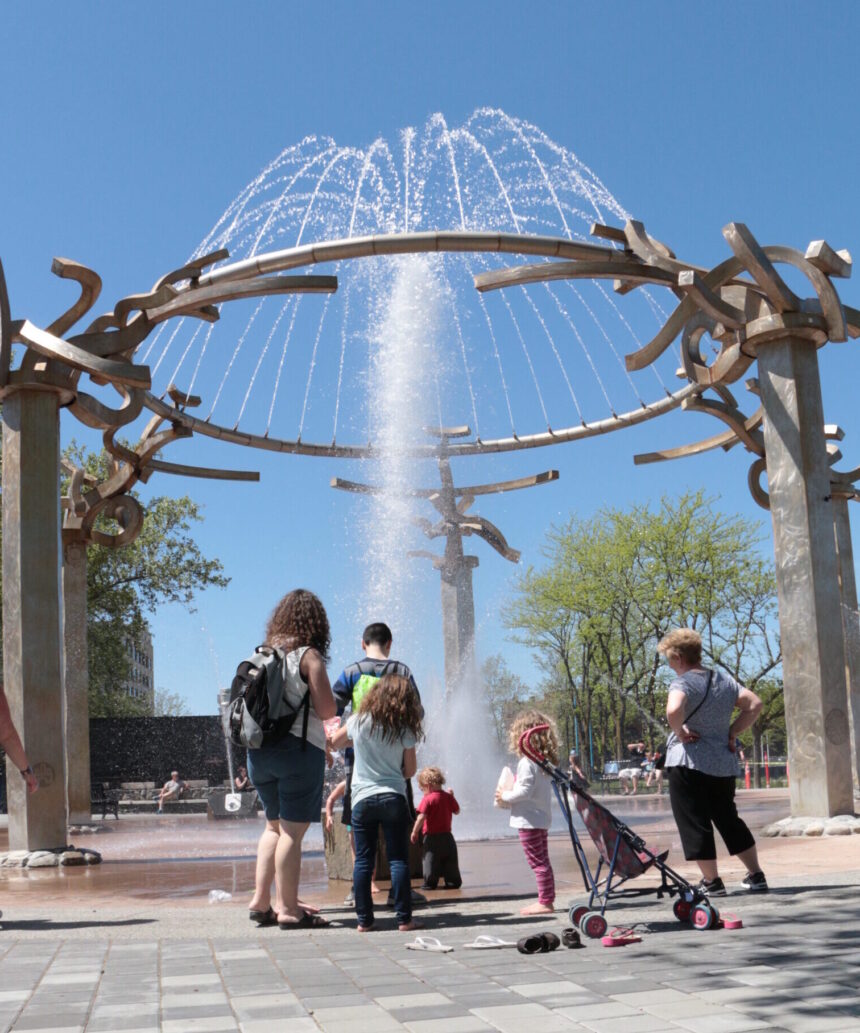It’s Tuesday of Summer Safety Week in downtown Spokane! July 31 through August 4, downtown is sharing resources and tips to foster a safer, more inviting, community for all.
Downtown is a beautiful place to build family memories from our engaging Ice Age Floods Playground and the Looff Carrousel to the Mobius Center. Today we want to highlight tips for kids’ safety so that your next family outing a stress-free and fun.
- If your kids are old enough to explore on their own, choose a meeting place they will remember in case they do get lost. It could be near an entrance, at the food court or a specific store or restaurant, or even by the security desk, depending on the place. Make sure that everyone knows to meet there if you become separated at some point.
- Identify public safety staff and security guard uniforms with your children and let them know they are a resource for the child if they do happen to feel lost.
- Avoid buying products that bear your child’s name. If someone calls him or her by name, your child might think a stranger could be a friend.
Emergency departments see more than 20,000 children ages 14 and younger for playground-related traumatic brain injury each year. Help your child play safe and prevent emergency room visits.
- Actively supervise children on playgrounds. It won’t be hard – they’ll probably be calling for you to watch them climb, jump and swing.
- Ensure that children use age-appropriate playground equipment. Separate play areas for children under 5 should be available and maintained.
- Spokane’s summer months bring abundant sunshine, necessitating adequate sun protection and hydration for children. Parents should ensure that their kids wear sunscreen with a high SPF, cover their skin with appropriate clothing, and wear hats and sunglasses. Additionally, encourage children to drink water frequently and carry water bottles when visiting parks.
- Report any playground safety hazards to the organization responsible for the site (e.g., school, park authority or city council).
When enjoying downtown with your family highlight the importance of street safety with your kids. - Something as simple as making sure that the kids hold hands, whether it’s with an adult or their siblings, will keep them safer in busy areas. For small children that don’t want to hold hands, keep them in a stroller or shopping cart.
- When navigating sidewalks, make sure that the child stays on the inside of you away from the street and curb line.
- It’s always best to walk on sidewalks or paths and cross at street corners, using traffic signals and crosswalks. If there are no sidewalks, walk facing traffic as far to the left as possible.
- Be a good role model. Set a good example by putting your phone, headphones and devices down when walking around cars.
As downtown bikes lanes increase in number, take precautions when using wheeled transit. Cyclists, skateboarders and scooters often share the road with vehicles, but injuries can happen even on a bike path.
- Children and adults should always wear helmets when riding bicycles. According to SAFE KIDS, bicycle helmets have been shown to reduce the risk of head injury by as much as 85 percent.
- Make sure your bike is the right size because you can’t control a bicycle that is too large. You should be able to straddle the bike and stand with both feet flat on the ground.
- Look left, right, and left again, before riding into traffic from a sidewalk, driveway, or parking lot.
- Make certain the bike has safety reflectors. All bikes should have reflectors on the front, rear, and wheel spokes.
- When losing your balance on a skateboard, crouch down so you have a shorter distance to fall.
- Ride scooters on smooth, paved surfaces without traffic. Don’t ride on streets and surfaces with water, sand, gravel, or dirt.
Ensuring kid safety is of paramount importance as it safeguards their well-being, fosters a secure environment, and allows them to thrive in their exploration and play. By implementing practical safety measures and promoting awareness, we can create a nurturing and protective space where children can grow, learn, and enjoy their experiences to the fullest.

